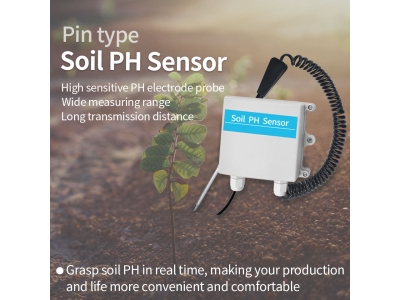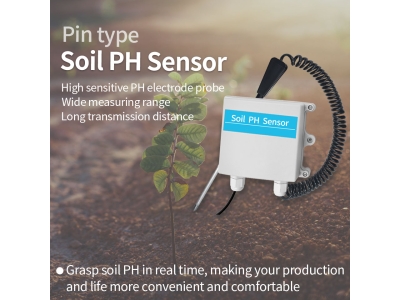Introduction In recent years, the agriculture industry has seen a significant shift towards the use of technology to improve efficiency and sustainability. One such technology that has gained popularity is smart soil sensors. These sensors are revolutionizing the way farmers manage irrigation and nutrient levels in their fields, ultimately leading to higher yields and reduced environmental impact. In this article, we will explore the benefits and applications of smart soil sensors in agriculture.

What are Smart Soil Sensors? Smart soil sensors are devices that are placed in the soil to measure various parameters such as moisture levels, temperature, and nutrient content. These sensors use advanced technology to provide real-time data to farmers, allowing them to make informed decisions about irrigation and fertilization. By monitoring these key soil parameters, farmers can optimize their irrigation and nutrient management practices, leading to more efficient use of resources and improved crop yields.
Benefits of Smart Soil Sensors There are numerous benefits to using smart soil sensors in agriculture. One of the most significant advantages is the ability to precisely manage irrigation. By monitoring soil moisture levels in real time, farmers can avoid overwatering their crops, which can lead to water waste and nutrient leaching. Additionally, smart soil sensors can help farmers identify areas of their fields that may be experiencing water stress, allowing for targeted irrigation to those specific areas. This not only conserves water but also ensures that crops receive the optimal amount of moisture for healthy growth.
In addition to improving irrigation efficiency, smart soil sensors also play a crucial role in nutrient management. By continuously monitoring nutrient levels in the soil, farmers can adjust their fertilization practices to ensure that crops receive the appropriate amount of nutrients. This not only leads to healthier plants but also reduces the risk of nutrient runoff, which can have harmful effects on the environment. Furthermore, by optimizing nutrient management, farmers can reduce input costs and minimize the use of synthetic fertilizers, contributing to a more sustainable agricultural system.
Applications of Smart Soil Sensors Smart soil sensors have a wide range of applications in agriculture, from large-scale commercial farms to small-scale operations. These sensors can be used in various types of crops, including row crops, orchards, vineyards, and greenhouse production. In row crop agriculture, smart soil sensors can be used to monitor soil moisture and nutrient levels in fields of corn, soybeans, wheat, and other staple crops. In orchards and vineyards, these sensors can help optimize irrigation and nutrient management for fruit and grape production. Additionally, smart soil sensors can be used in greenhouse production to ensure that potted plants and vegetables receive the proper amount of water and nutrients.
Furthermore, smart soil sensors can be integrated with other agricultural technologies, such as precision agriculture systems and automated irrigation systems. By combining these technologies, farmers can create a more efficient and sustainable farming operation. For example, smart soil sensors can provide data to precision agriculture systems, allowing farmers to create detailed soil maps and prescription maps for targeted fertilization. Similarly, smart soil sensors can communicate with automated irrigation systems to adjust watering schedules based on real-time soil moisture data, reducing the need for manual intervention and saving time and labor.
Challenges and Considerations While smart soil sensors offer many benefits to farmers, there are also challenges and considerations to keep in mind when implementing this technology. One of the main challenges is the initial cost of purchasing and installing smart soil sensors. However, it is important to consider the long-term benefits of this technology, including increased crop yields, reduced input costs, and environmental sustainability. Additionally, farmers may need to invest in training and education to effectively utilize smart soil sensors and interpret the data they provide.
Another consideration is the maintenance and calibration of smart soil sensors. These devices require regular maintenance to ensure accurate and reliable data collection. Additionally, calibration is essential to ensure that the sensors are providing accurate measurements of soil parameters. Farmers should be prepared to invest time and resources into maintaining and calibrating their smart soil sensors to maximize their effectiveness.
Conclusion Smart soil sensors are revolutionizing the way farmers manage irrigation efficiency and nutrient management in their fields. By providing real-time data on soil moisture, temperature, and nutrient levels, these sensors enable farmers to make informed decisions about irrigation and fertilization, ultimately leading to higher yields and reduced environmental impact. While there are challenges and considerations associated with implementing smart soil sensors, the long-term benefits of this technology make it a valuable investment for modern agriculture. As the agriculture industry continues to embrace technology, smart soil sensors will play a crucial role in improving efficiency and sustainability in farming practices.






